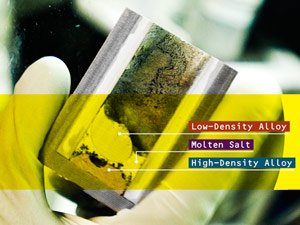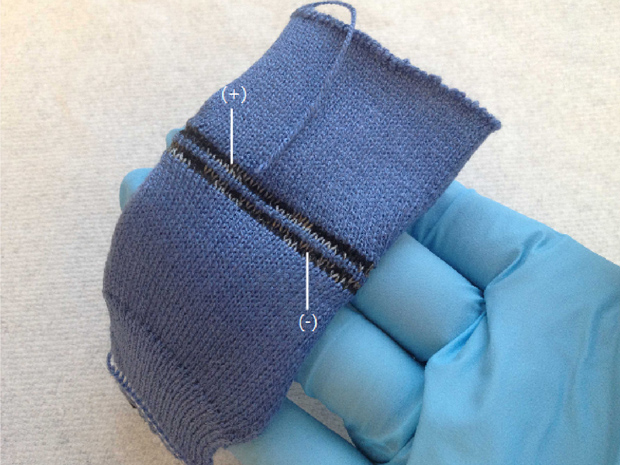 Researchers create an all-liquid-metal battery that could allow alternative power schemes to flourish and three more breakthrough technologies that the U.S. Department of Energy is funding now.
Researchers create an all-liquid-metal battery that could allow alternative power schemes to flourish and three more breakthrough technologies that the U.S. Department of Energy is funding now.
Plans to add renewable power sources to the electric grid have a common problem: weak, expensive and small batteries that can’t guarantee there will be juice when the wind isn’t blowing or the sun isn’t shining. Donald Sadoway, professor of materials chemistry at Massachusetts Institute of Technology, thinks the solution lies in novel batteries that use liquid metals.
The battery designed by Sadoway and his team works on the same principle as any other: Two electrodes exchange electrons through an electrolyte to complete a circuit. But by using liquid metals for electrodes and molten salt as an electrolyte, their battery can absorb electrical currents that are 10 times higher than present-day high-end batteries. Only the different densities of the liquids keep them separated inside the battery, which means it would be a poor choice for most mobile applications–but smart for a fixed location, such as an electrical installation.
Sadoway’s team first made shot-glass-size prototypes to experiment with costly ingredients such as pure magnesium and pure antimony, but is now seeking the right mix of alloys for optimal performance and cheap manufacture. The Department of Energy’s idea factory, the Advanced Research Projects Agency–Energy (ARPA-E), is putting $6.9 million behind Sadoway’s project. His award is one of the biggest of the agency’s first round of funding, released in late 2009. The batteries need external heaters to keep their innards molten at operating temperature. “One of the goals of the ARPA-E-funded project is to determine the smallest size of cell that would not need booster heaters,” Sadoway says.
The U.S. Department of Energy is funding research into the following breakthrough technologies:
Cellulosic Biofuels From Genetically Modified Plants
Conventional biofuels, like corn-based ethanol, divert food crops to generate energy. Massachusetts startup Agrivida is genetically engineering fuel crops to contain cellulose-processing enzymes, potentially making cellulosic biofuels commercially viable for the first time. Federal funding: $4.5 million.
Bacteria That Produce Biofuels Researchers from the University of Minnesota are using two species of bacteria to make it easier and cheaper to turn plants into fuel: one to photosynthesize sugar from sunlight and carbon dioxide, and another to convert it into biofuel. Federal funding: $2.2 million.
A More Perfect Metal – Air Battery
Fluidic Energy, founded by Arizona State University materials scientist Cody Friesen, is creating a portable metal–air battery that uses ionic liquids (low-temperature liquid salt) instead of water-based electrolytes. The design could pack 11 times the energy density of today’s best lithium-ion batteries without the limited voltage and evaporation problems typical of metal–air designs. Federal funding: $5.1 million.




Seeing a few of your posts I seriously found this one to be really good. I’ve got a blog site also and wish to repost some snips of your content in my own blog site. Should it be okay if I do that as long I reference your blog post or build a back-link to the write-up I took the snip from? If not I realize and would never do it with out your endorsement . I have book marked this posting to twitter in addition to zynga account for reference. Anyway many thanks either way!